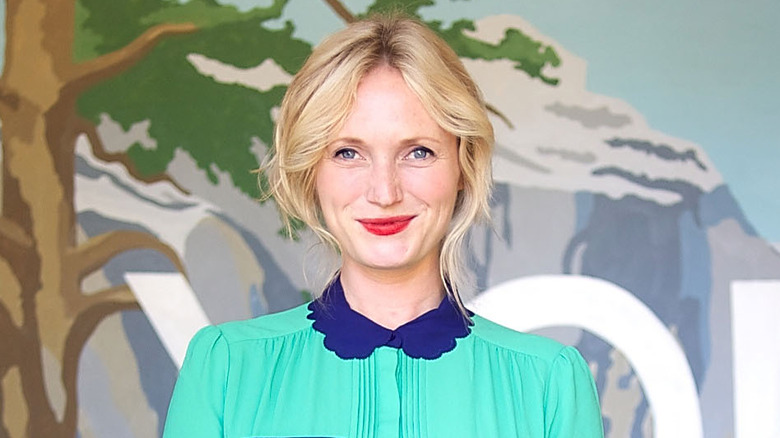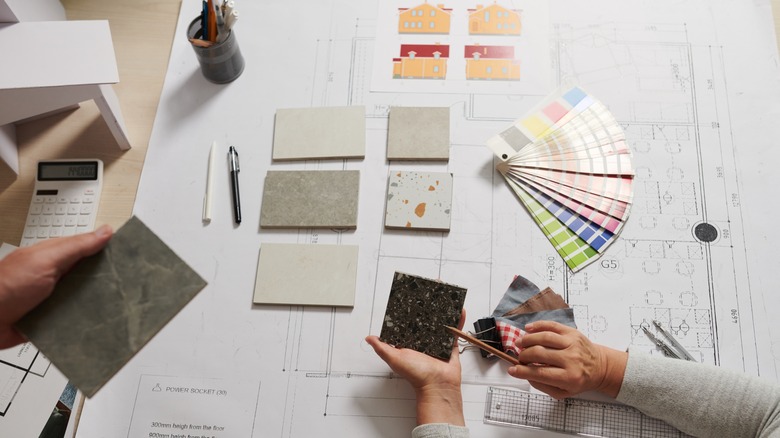HGTV's Emily Henderson Offers A Sampling Of How ChatGPT Would Decorate A House
Artificial Intelligence (AI) has seen widespread interest since the 1980s, and recently ChatGPT has emerged. This phenomenon taking over the internet is a chatbot created by AI technology that has interactive conversations and answers your questions and needs based on its access to data. Many wonder how this newer development will change their lives and, most importantly, their professions. Emily Henderson, founder of stylebyemilyhenderson.com contemplates AI's effect on the design industry. "Like most human beings, I have mixed feelings about Artificial Intelligence taking over the world (and my job)," she wrote on her website. "By 'mixed' I think it's mostly going to be pretty bad socially and culturally, but it also feels rather inevitable, so we need to accept, pivot, and figure out ways to adapt and enjoy our lives."
Although Henderson has her opinions about AI's positive or negative impact, she was curious to ask ChatGPT how it would design a home. Based on her most popular posts, ChatGPT formulated precise responses in a series of two questions that outlined how to hang your curtains and arrange your living room. "Being a digital creator is now being highly challenged as a lot of the information that I try to give as design education, can now be asked to AI instead of Google," she noted. "Creativity can be copied, just not as good, and figuring out what holes can not be filled by AI is the new challenge."
How would ChatGPT decorate a house?
When testing how ChatGPT would advise one to decorate their home, Henderson first asked, "How high should you hang curtains?" The AI responded by outlining four steps, including placing curtain rods as close as possible to the ceiling, measuring curtains to the needed length, taking the style of your curtains into account, and keeping the other room décor in mind, per her website. "In summary, it is generally recommended to hang curtains as close to the ceiling as possible, with a length that either touches the floor or pools on it depending on the desired look, taking into account the style of the curtains and any furniture or decorative elements in the room," ChatGPT explained.
Henderson's second question was, "How do I lay out my living room furniture?" In another detailed answer, AI provided six points to follow, starting with determining the room's focal point. Then, it suggested arranging an area that encourages conversation and keeps an open flow of movement. It said to choose furniture that is an appropriate scale for the space, add all your personal touches and décor, and try sampling different layouts. "In summary, when laying out your living room furniture, consider the focal point, create a conversation area, leave enough space for traffic flow, choose appropriately sized furniture, add accent furniture and accessories, and experiment with different layouts until you find the perfect one for your space," ChatGPT said in conclusion.
Using ChatGPT for interior design
After receiving her answers from ChatGPT, Henderson acknowledged that the AI was correct in its assessments and advice but that it currently lacks the personality most people look for in interior designers. But interior designers can still use ChatGPT to help grow and improve their businesses. ChatGPT can be used for numerous website-building tasks like helping manage sales data, keeping up with emails, drafting FAQ pages, and creating easy-to-use website layouts for consumers. It can also inspire new ideas and visions for clients, offering endless research and statistics that can be used to one's advantage. With the continued evolution of this technology, learning to use it as a tool to enhance your profession will be key.
Keeping up with all the different trends that constantly emerge and fluctuate can be a demanding job. AI can help make that easier with spreadsheets and weekly updated information on rising and falling trends across multiple industries. Social media marketing for a business can be an entirely separate commitment on its own, but with AI, you'll be able to better keep up with algorithms and draft spunky captions. The downside to ChatGPT is that it sources from existing data, so you can't count on it to give you original and innovative ideas that it won't give the next person who asks the same question. This is why when using AI to stimulate the creative process, it's essential to use it as a jumping-off point, not a shortcut.


